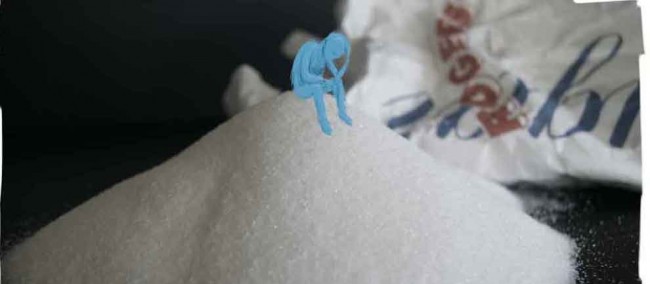
Photo Credit: Facundo Gastiazoro
The bitter side of sweetness: Struggling with obsessive eating disorder
Lisa sits across from me in a Smithers coffee shop, sipping a caramel macchiato. She’s a striking woman in her mid-30s, tall and curvy with a winning smile and healthy glow. It’s hard to believe that Lisa struggles with addiction.
Her illness isn’t the kind that leads a person to East Hastings or life on the streets. In some ways, it’s harder, because she faces it wherever she goes: her children’s birthday parties, her pantry, even swirling around us in this busy café. Her addiction is to sugar and, unlike hard drugs, she stares down her nemesis every single day.
“Sugar is a drug. It really is a drug,” she says. “When you have an addiction, you’ve re-wired your brain to gain pleasure from whatever substance is your addiction, which is why you will have it for the rest of your life.”
Many of us enjoy the occasional treat or caffeine-charged pick-me-up. For most, it’s just a bite or a sugary drink. But for those who struggle with compulsive overeating, stopping at just one isn’t an option. For Lisa, it can lead to a downward spiral of regret, self-reproach and mood swings.
A 2007 study by researchers at Université Bordeaux in France showed 94 percent of rats chose sweetened water over that mixed with cocaine—a testament to the addictive qualities of this celebrated sweetener. But not only is sugar highly addictive, it’s more socially acceptable than your average narcotic. In fact, food is a pivotal part of our society.
“We live in a culture that’s so OK with it,” Lisa says about overeating. She points to the concept of “comfort food”: the idea that food is a place to find well-being. Her weaknesses are fat, sugar and carbs—elements often found in baked goods like doughnuts and cake. Although she’s generally an overeater, it’s the dopamine response she gets from sugar that makes it hard to stop: “I can’t have just one serving.”
Seeking support
Lisa first realized she had a problem in 2008. She was working with recovering alcoholics and drug addicts in Vancouver and identified with their obsessive behaviour.
“I realized instead of using alcohol and drugs, I was using food,” she says. “It took me another four years before I got to a meeting and started actually working a program of my own.”
When her son was born in fall 2012, she weighed 250 pounds. She’d struggled with gestational diabetes and although doctors were polite, she knew her weight and sugar consumption had likely contributed to her health problems during pregnancy.
“I had one meal every day—I started when I woke up and ended when I went to sleep,” she remembers. But it wasn’t until she consumed her daughter’s entire Halloween candy collection that November that she sought help by attending her first Overeaters Anonymous (OA) meeting in the Lower Mainland.
New Mexico-based OA was born when its founder, Rozanne, attended a Gamblers Anonymous meeting in 1958. She recognized herself in the gamblers’ compulsive behaviours and realized the 12-step program started by Alcoholics Anonymous was also applicable to compulsive eaters. The first OA meeting took place in Los Angeles on Jan. 19, 1960 with three founding members attending.
Today, OA has over 60,000 members worldwide with about 6,500 groups meeting weekly in over 75 countries. Support is available not just all over the world, but also online and over the phone. Meetings are open to all shapes and sizes—from the obese to anorexics.
“In OA, people find others who have gone through what they are going through. They learn they are not alone and there are others suffering similarly who have found a solution and are recovering, living healthy, rich, productive lives, while abstaining from compulsive eating and maintaining a healthy weight,” OA managing director Naomi Lippel says. “It gives them hope and strength to keep with the program, one day at a time.”
Meetings involve talking about the life-long effects of compulsive overeating, reading the 12 steps, reading literature and sharing—not just about the members’ struggles, but also about their hope. In the Lower Mainland, OA offers guest speakers, weekend retreats and the support that comes with knowing you aren’t alone. Worldwide, average group sizes are eight to nine members.
Resources in the North are fewer and far between.
Moving forward
When Lisa moved north recently, she came armed with OA literature and the incentive to create her own group in Smithers. But finding support in the sparsely populated region hasn’t been easy.
She put an ad in the local paper and placed posters around town. The posters garnered the attention of a Hazelton resident who started a group there, which has two members. The Smithers group also has two regular members. Occasionally, both groups get together.
“It’s harder. I’m finding it harder to maintain my abstinence up here,” Lisa says. “It’s very isolating.” Some prospective members have a hard time grasping their disorder as a disease, she says. Others don’t want to admit they have a problem at all.
When she moved to Smithers, her weight had dropped to 200 pounds. Today, standing 5’8”, she weighs 224 pounds. She still attends the weekly meetings, just her and one other member, and she still wrestles daily with her willpower.
“Going to birthday parties is hard,” she laughs. A few months ago, she declined cake at one such gathering and was told it would be rude not to eat it—so she caved. But she didn’t beat herself up.
“What OA has taught me is when you do mess up, because it does happen, you are gentle with yourself,” she says. It teaches that the reasons for the illness are not important, she says; it’s more important to keep looking forward. She focuses on living moment to moment.
“Not every day is a success, but there’s always a new day,” she says. “I can make a choice right now whether I want to eat this doughnut or whether I want to walk away from it.”
She has cut back on baking (although she still makes her kids’ birthday cakes) and cooks now with local honey or maple syrup rather than refined sugar. She eats three meals a day, following the OA guidelines by sitting down to eat and adjusting portion size.
“I used to walk around in a food fog. I don’t have the food fog anymore,” she says about the exhausting emotional roller coaster the sugar highs and lows sent her on. Today, she has energy to spend on her family and her relationships: “I’m a better person. I’m a better mom. I’m a better wife.”
She credits OA and the 12-step program for turning her life around.
“That feeling I used to find comfort in is not comfortable for me anymore,” she says. “I feel more comfortable in my own skin than I have been in my whole life. There’s only love and acceptance now in my head.”
Along with Smithers and Hazelton, OA groups exist in the North in Prince George and Mackenzie. For meeting times and locations in your area or more information about Overeaters Anonymous, visit OA.org.





Lisa, I cut out grains and sugar a few months ago. Huge carb cravings beaten down by full fat Greek yogurt and berries, goat cheese on dates, savoury snacks like bacon rinds. Lost a lot of weight without extra exercise or starving myself. Sugar is the devil!
👤 Char 🕔 Oct 11, 2014